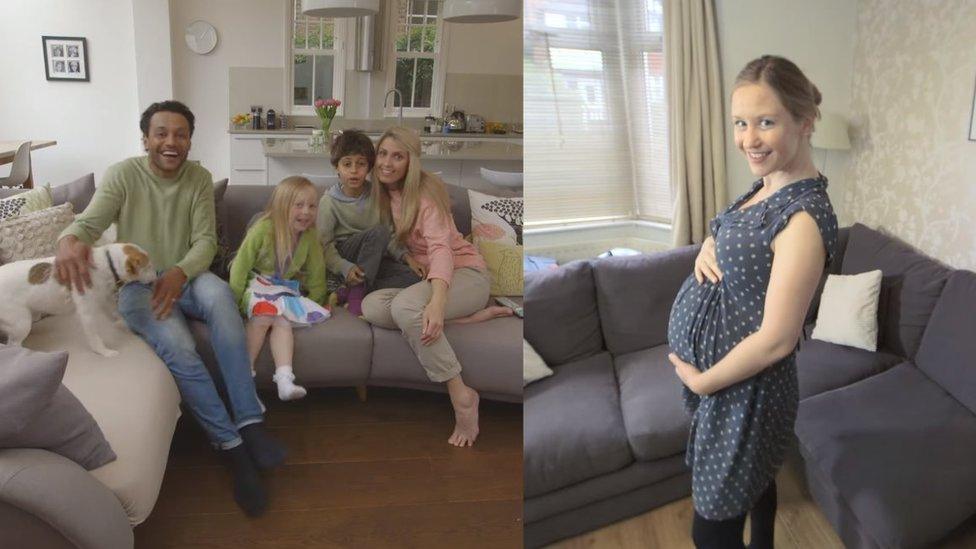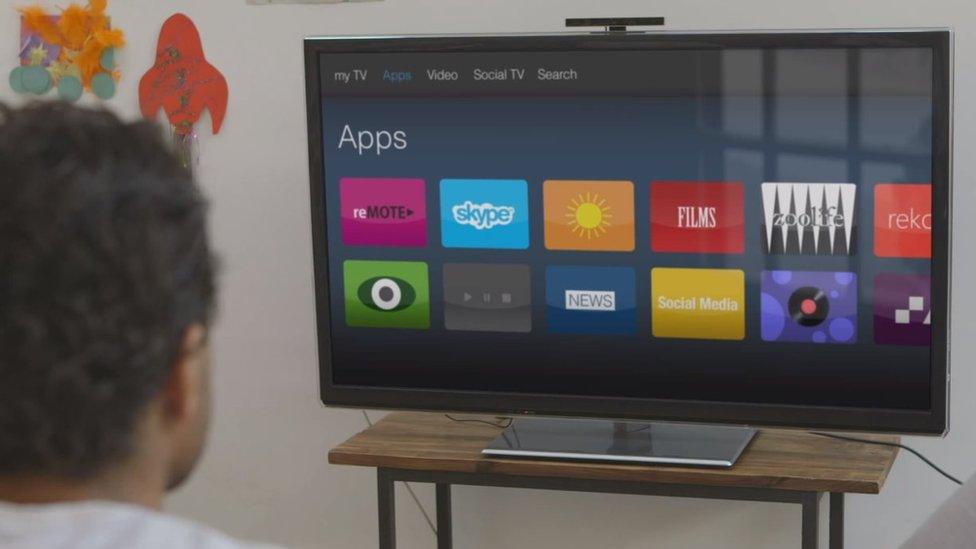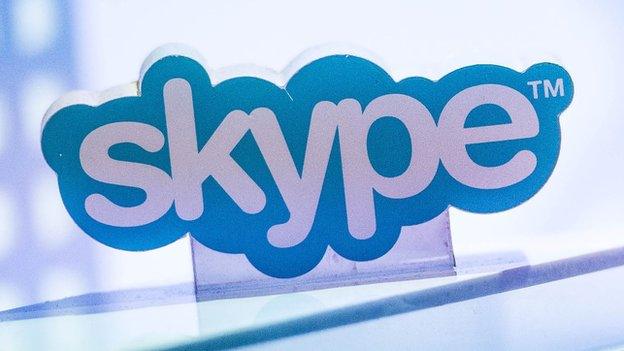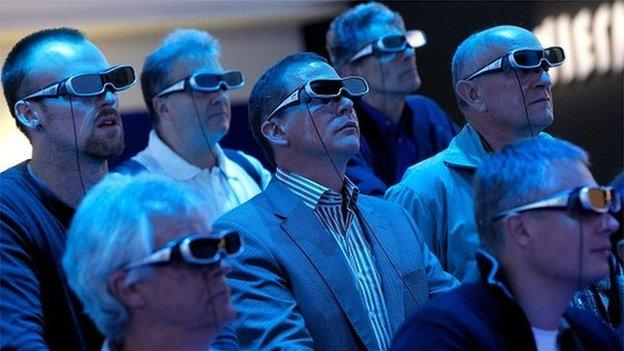Skype ditches support for smart TVs
- Published

The Skype-for-TV service was marketed as a good way to chat from the living room sofa
Skype has announced that it is ending support for its smart TV software.
The Microsoft-owned chat app said that the move reflected the public preference for using mobile devices to make video calls from the living room, despite the size advantage TVs offered.
It will continue to maintain the service until June.
Afterwards, it will be up to individual manufacturers to decide whether to remove the app or continue offering an unsupported service.
Skype's intention to focus its efforts on phones and tablets comes at a time when it faces heightened competition.
Although Google's rival Hangouts service has had limited appeal on mobiles, Facebook's Messenger and Apple's Facetime apps are making more headway.
In addition, Xiaomi recently launched its own Mi Video Call service, and Slack has announced plans to add support for video chats to its popular business-focused chat tool.
Rise and fall
Skype for TV was first unveiled at the CES tech show in January 2010 and was marketed as a way to let families "share the limelight [from their sofa] so there's no more huddling around the computer or missing an out-of-shot moment".
It required TVs to be fitted with either a built-in camera or a plug-in peripheral.

Skype for TV was one of CES's biggest announcements when Panasonic and LG promised to add the app in 2010
TV-makers that adopted the service included Samsung, LG, Sony, Panasonic, Sharp, Toshiba and Philips.
"Over the years, users have changed the way they use Skype, with the majority accessing it from a mobile device - including when in the living room," reads a message posted to the app's support page, external.
"We want to make sure we prioritise delivering the best possible experience to the platforms our users are asking for, which is why we've decided to focus our efforts in other areas while supporting key functionality on Skype for TV for as long as possible."
Samsung has already announced that its TVs will stop offering the app from 2 June.
'No way back'
Many science-fiction movies and comics had envisioned that people would want to chat to each other via large screens in their homes.
But one expert said that technology had gone down a "very different route".

Samsung TV owners have already been told to say goodbye to the service
"On paper the idea of using a TV for things like Skype made a lot of sense - it's a non-threatening device that people were already comfortable with, so it seemed a good way to get the tech into the living room," said Chris Green, a technology analyst at the consultancy Lewis.
"But the ubiquity of mobile devices made video conferencing on TVs redundant.
"No-one ever got used to using a big screen for Skype because they never needed to - people are far more used to picking up a tablet and doing it that way - and I don't think there's a way back now."
- Published2 February 2016

- Published5 May 2015

- Published29 August 2013
